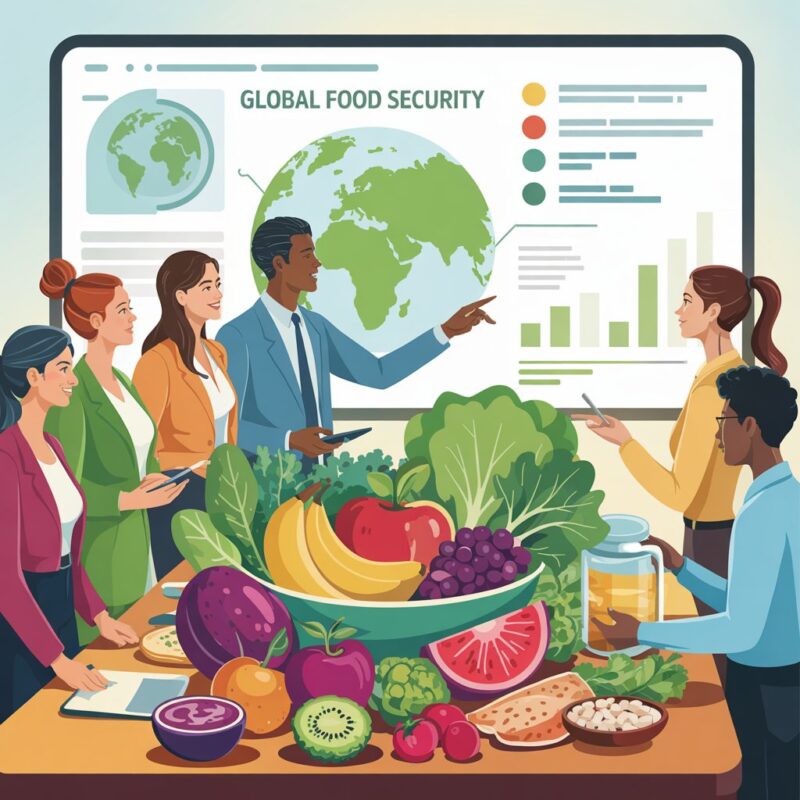The Global Nutrition Challenge: More Than Just Food on the Table
Let’s get real – nutrition isn’t just about counting calories or following the latest diet trend. It’s the backbone of global health, and Nutrition International is taking this challenge head-on. Think of it as the ultimate collaboration between smart people who want everyone to eat better, know better, and ultimately, live better.
The concept encompasses more than just passing out food – it’s about creating sustainable systems that educate professionals, tackle food insecurity at its roots, and implement strategies that actually work in the real world.
In recent years, research has highlighted how nutrition isn’t just some soft science – it’s a rigorous field requiring serious scientific methods and collaborative approaches. The gap between knowing what works and actually making it happen? That’s where the real challenge lies.
Why Nutrition Science Deserves More Respect
You might think nutrition is just about telling people to eat their veggies, but it’s way more complex than that. At the Fourth International Summit on Medical and Public Health Nutrition Education, experts emphasized that nutrition research demands scientific rigor equal to any other medical discipline.
The struggle? Translating all that research into practices people can actually use.
Here’s the thing – nutrition faces a PR problem. Despite being fundamental to health, it often gets sidelined in professional education. Studies show that effective communication tools like infographics can bridge the knowledge gap, especially in regions where nutrition science is misunderstood or undervalued.
The Education Gap: Medical Schools Dropping the Ball
Want to know something shocking? Many doctors graduate with minimal nutrition training. A recent comparative study between international medical students in China and their home-country counterparts revealed some serious gaps:
- Home-country students had better knowledge of national nutrition guidelines
- They were more confident providing recommendations for conditions like diabetes and hypertension
- International students lacked both specific nutrition courses and practical training
This isn’t just an academic concern – it has real-world impact. When these students return home as doctors, they’re underprepared to address the nutrition challenges specific to their countries.
Child Nutrition: The Global Stakes Are Higher Than Ever
When it comes to nutrition challenges, kids bear the heaviest burden. Recent bibliometric analyses have identified key research focusing on trends and future prospects in child nutrition globally.
The research emphasizes just how critical addressing malnutrition is for improving child health outcomes worldwide. This isn’t just about hungry kids – it’s about brain development, immune function, and setting the foundation for lifelong health.
Breaking Down the Global Nutrition Barriers
Why is improving nutrition globally so damn difficult? Let’s break down the main roadblocks:
Geographic and Cultural Challenges
Nutrition isn’t one-size-fits-all. What works in Stockholm might fail in Senegal. Research shows geography, cultural diversity, and local food systems create vastly different nutritional landscapes around the world.
This is where Nutrition International’s approach shines – recognizing that solutions must be tailored to specific contexts rather than applying Western nutritional models universally.
Economic Realities
Let’s be honest – money matters. Economic disparities dramatically affect food security and nutrition quality. In many regions, the issue isn’t knowledge about healthy eating – it’s affordability and access.
Nutrition International initiatives acknowledge this reality, focusing on interventions that account for economic constraints while still improving nutritional outcomes. This means developing solutions that are not just effective but economically sustainable.
Education and Awareness Gaps
Here’s a mind-blower – many healthcare professionals worldwide receive less than 24 hours of nutrition education during their entire training. Studies highlight that this knowledge gap severely limits their ability to provide effective nutritional guidance.
International students studying abroad face an additional challenge: learning nutrition principles that might not apply to the food environment back home. When they return to practice, they lack both general nutrition knowledge and context-specific understanding.
Turning Research Into Action: The Communication Challenge
You can have all the nutrition knowledge in the world, but if you can’t communicate it effectively, what’s the point?
The Translation Problem
One of the biggest hurdles in nutrition is translating complex research into actionable advice. Recent findings show that despite abundant research, getting that knowledge into practice remains difficult due to:
- Communication barriers between researchers and practitioners
- Persistent misconceptions about nutrition science
- Lack of accessible formats for complex nutritional information
Visual Communication as a Game Changer
This is where smart communication strategies come in. Infographics and visual tools have proven particularly effective at simplifying complex nutrition concepts. Rather than overwhelming people with technical jargon, visual communication breaks down key principles into digestible (pun intended) formats.
Nutrition International advocates for these approaches, recognizing that sometimes the best science needs the simplest explanation.
Real Solutions: What’s Actually Working
Enough about problems – let’s talk solutions. Here’s what’s making a difference in Nutrition International efforts:
Enhanced Professional Education
Medical and healthcare education needs a serious nutrition upgrade. Research recommends that schools:
- Include practical nutrition courses tailored to both local and international contexts
- Provide hands-on training in nutritional assessment and counseling
- Integrate country-specific nutrition challenges into the curriculum
These changes would ensure healthcare providers graduate with the confidence and competence to address nutrition issues in their communities.
Cross-Discipline Collaboration
Nutrition doesn’t exist in a vacuum. The most successful approaches bring together experts from multiple fields. Studies show that partnerships between researchers, policymakers, healthcare providers, and educators create innovation in addressing food security.
This collaborative approach recognizes that nutrition challenges are influenced by agriculture, economics, culture, and healthcare systems – requiring integrated solutions rather than siloed efforts.
Technology as an Enabler
Digital tools are revolutionizing how nutrition information is shared and implemented. From apps that track nutritional intake to platforms that disseminate evidence-based guidelines, technology is making nutrition knowledge more accessible than ever.
Research highlights that digital platforms can simplify complex nutrition information for broader audiences, particularly in regions where traditional education methods may be limited.
Comparing International Nutrition Education Models
Let’s break down how different approaches stack up:
| Aspect | Traditional Model | Nutrition International Approach |
|---|---|---|
| Focus | Disease treatment | Prevention and wellness |
| Education Style | Theoretical knowledge | Practical application |
| Cultural Context | Standardized content | Locally adapted information |
| Technology Use | Limited | Integrated digital tools |
| Stakeholder Involvement | Primarily healthcare | Multi-sector collaboration |
This comparison shows why the comprehensive approach championed by Nutrition International initiatives is gaining traction globally.

The Future of Nutrition International
The field is evolving rapidly, with several emerging trends worth watching:
Personalized Nutrition Science
We’re moving beyond one-size-fits-all recommendations to personalized approaches based on genetics, microbiome, and individual metabolic responses. Nutrition International researchers are exploring how these personalized approaches can be scaled to population levels.
Climate-Conscious Nutrition
The intersection of nutrition and environmental sustainability is becoming increasingly important. Future nutrition initiatives will need to balance optimal human health with planetary health considerations.
Digital Integration
From AI-powered meal planning to remote nutritional counseling, digital tools are set to transform how nutrition knowledge is delivered and implemented globally.
Taking Action: What You Can Do
Whether you’re a nutrition professional, healthcare provider, or policy maker, here are concrete steps to support better nutrition outcomes:
- Advocate for enhanced nutrition education in healthcare curricula
- Support evidence-based, culturally appropriate nutrition programs
- Utilize and share visual communication tools to translate complex nutrition concepts
- Engage in cross-disciplinary collaboration to address food security challenges
- Stay updated on emerging nutrition research and implementation strategies
The Bottom Line on Nutrition International
Improving global nutrition isn’t just about telling people what to eat – it’s about creating systems where good nutrition is accessible, understood, and implemented. Nutrition International brings together the critical elements of education, research, and practice to address some of our most pressing global health challenges.
By bridging knowledge gaps among professionals, adapting strategies to local contexts, and promoting evidence-based practices, these initiatives are paving the way for sustainable improvements in nutrition worldwide.
The real challenge – and opportunity – lies in translating what we know works into what we actually do. With continued collaboration across disciplines and borders, Nutrition International efforts stand to make significant impacts on global health outcomes for generations to come.
Ready to learn more? Dive deeper into the research and discover how you can contribute to this vital field.










